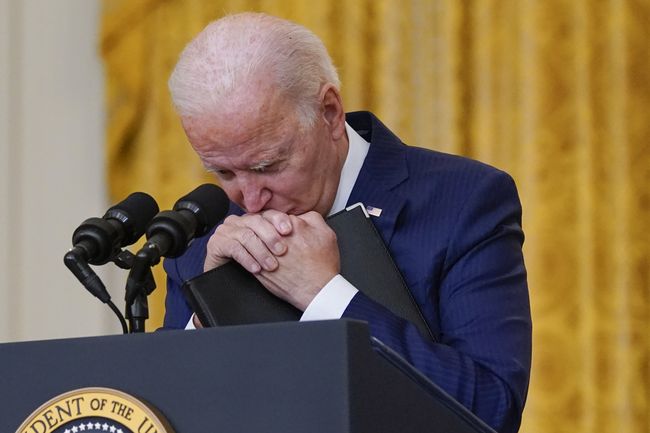
Joe Biden
STRATEGIC ASSESSMENT. A new report from the U.S. Senate Homeland Security and Governmental Affairs Committee (HSGAC), the chief oversight committee of the U.S. Senate, reflects poorly on how U.S. government agencies are addressing the threat posed by domestic terrorism, specifically white supremacy and anti-government extremism. The review, which took place over three years, faulted the Department of Homeland Security (DHS) and Federal Bureau of Investigation (FBI) for issues surrounding data collection and analysis and insufficient resource allocation. The report also laid out the primary findings of the nature of the domestic terrorism threat and details how the phenomenon has intensified over the past several years. According to the authors, domestic terrorism in the United States now supplants international terrorism as the main threat to the homeland.
The HSGAC also found that within the broader category of racially and ethnically motivated violent extremism, white supremacy is the most lethal ideological undercurrent. Although not laid out in detail in the report, white supremacy extremism is also the most likely to have a transnational element, as neo-Nazi groups and others motivated by racial animus continue to network both online and in person. The so-called “Great Replacement” narrative also continues to resonate with individuals, as evidenced by the manifesto of the Buffalo attacker Peyton Gendron, the individual responsible for the murder of ten individuals in a racially motivated attack. Its embrace and promotion by conservative Fox News host Tucker Carlson, as well as some elected and prospective politicians, as displayed its increasingly mainstream appeal and potential to radicalize. The Biden administration released a strategy to counter domestic terrorism in June 2021, which elevated combating domestic violent extremism and provided resources for DHS and other agencies.
Yet, the report criticizes various agencies within the U.S. government for being too cumbersome in pivoting from the threat posed by international terrorism to the growing challenge of domestic terrorism. Yet, after two decades of focusing almost exclusively on the overwhelming dangers of transnational terrorist groups like al-Qaeda and the so-called Islamic State, it seems logical that bureaucratic organizations might be slow to adjust. Moreover, the threat from international terrorism has not waned, although it has morphed, and the terrorism threat landscape is arguably more diverse heading into 2023 than at any point in recent memory. Lastly, given the lack of a domestic terrorism statute in the United States, it makes sense that agencies and organizations may be unclear about their roles, missions, and the legal authorities governing counterterrorism of a purely, or even mostly, domestic nature.
DHS was criticized for being too slow to acknowledge the threat of domestic terrorism, having initially flagged it in 2009, yet only sounding the alarm in 2019, when it was obvious to many practitioners, academics, and politicians. Federal agencies were also criticized for the way in which violent extremist ideologies are characterized. White supremacist violence and violence perpetrated by so-called “Black Identity extremists,” a controversial categorization some claim strings together unrelated violent acts and targets Black activists, are included in the same category. Combining such disparate categories distorts and obfuscates the true nature of violent white supremacy. Moreover, critics of the “Black identity extremism” classification claim that such cases are prioritized over the more pressing and prevalent violence committed by white supremacists and far-right extremists. Finally, federal agencies have been slow to adapt to extremists’ use of social media specifically and the internet more broadly. However, the report also reserved criticism for Silicon Valley and social media companies’ tepid response to the proliferation of extremist content on their platforms, receiving criticism for failing to adequately address the issue of harmful content and its spread on their platforms.
The HSGAC report is a crucial reminder of the range of terrorism threats facing the United States, and the consequences of failing to address them and invest more heavily in prevention. Even though political violence surrounding the recent midterm elections failed to manifest, there are still serious concerns over militia violent extremists and racially motivated acts of terrorism, in addition to the torrent of disinformation and conspiracy theories that often facilitate the radicalization process. Some have speculated that the lack of violence before, during, and after the midterm elections is related to the U.S. government’s response to the January 6, 2021, Capitol insurrection and subsequent arrest and prosecution of individuals who commit acts of political violence and domestic terrorism. More than 900 individuals have been charged with crimes related to Jan. 6th, and high-profile leaders of extremist groups, including Stewart Rhodes, have been held accountable for their actions. Rhodes, the leader of the Oath Keepers militia, was found guilty earlier this week of seditious conspiracy in a landmark ruling which is certain to have reverberations throughout the broader far-right extremist ecosystem. Whether such consequences serve as a deterrent in the 2024 election, or more broadly in society, may depend on U.S. government agencies’ ability to adequately prioritize and address the threat of domestic terrorism (TSC).





